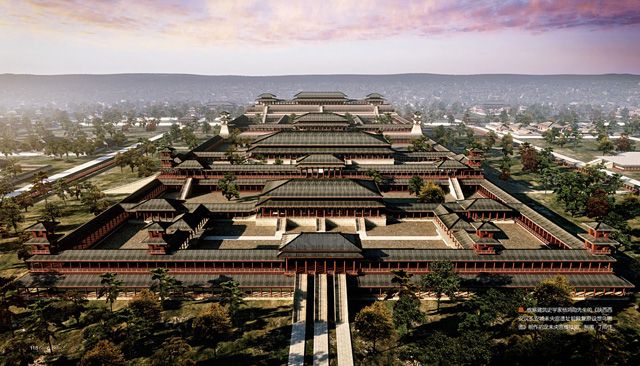

After defeating the Qin Dynasty, Liu Pang became Emperor Gaozu, establishing the Han Dynasty. He retained most of the administrative reforms of his predecessor, but ended the book burning and state suppression of scholarship, instead adopting Confucianism as the official state ideology. Art, poetry, and music were supported, leading to a golden age in Chinese history. The Han administration even included the Yuë Fu or "Music Bureau," which catalogued, patronized, and coordinated both entertainment and court ritual.
The Han Dynasty lasted four hundred years. The throne was seized in 9 AD by a Confucian scholar named Wang Mang, who established the short-lived Xin Dynasty, but rebellions broke out throughout China and Wang Mang was killed when the capital city, Chang'an, was attacked. The Han Dynasty was re-established in 25 AD under Emperor Guangwu. Since he moved the capital to Luoyang, east of Chang'an, the period before the Xia Dynasty is known as the "Western Han" and the period after is called the "Eastern Han."